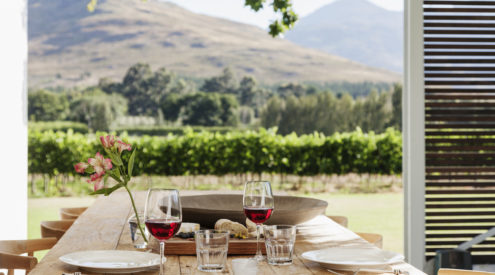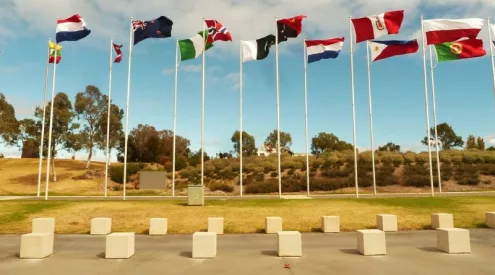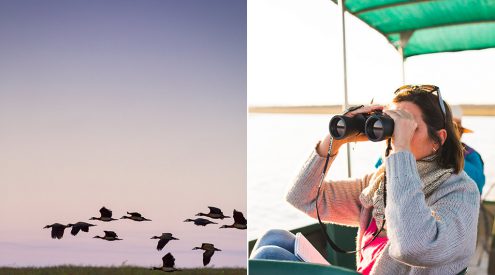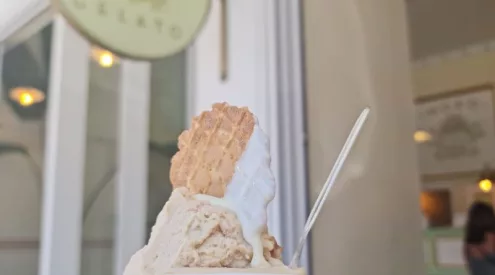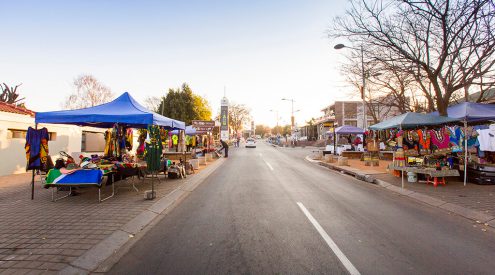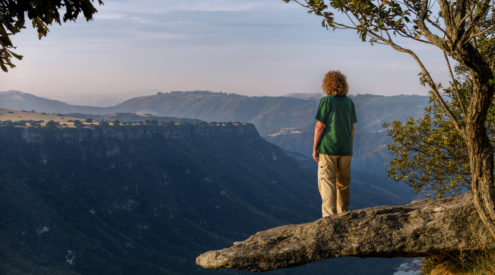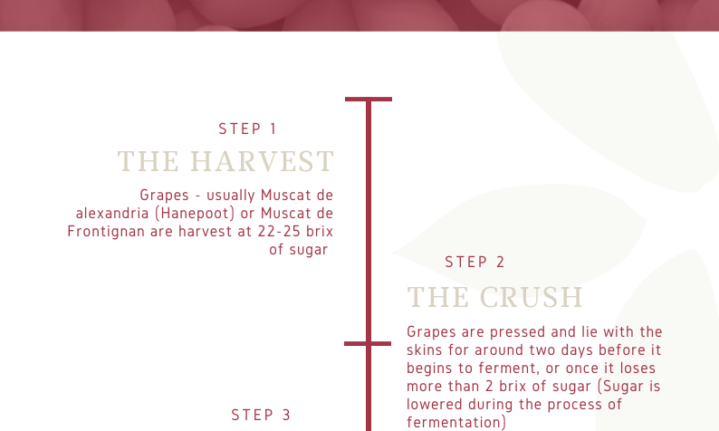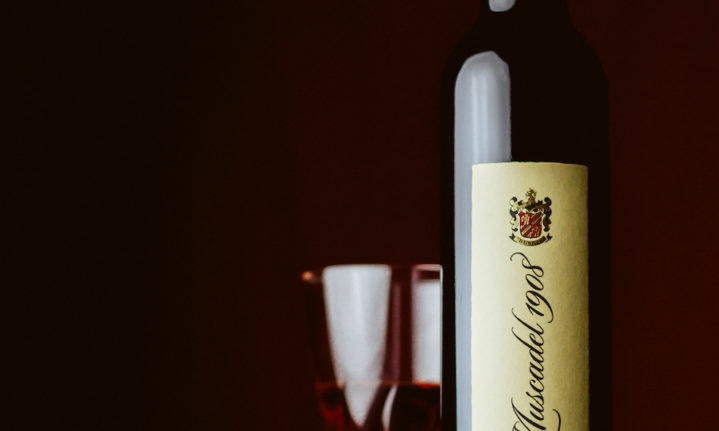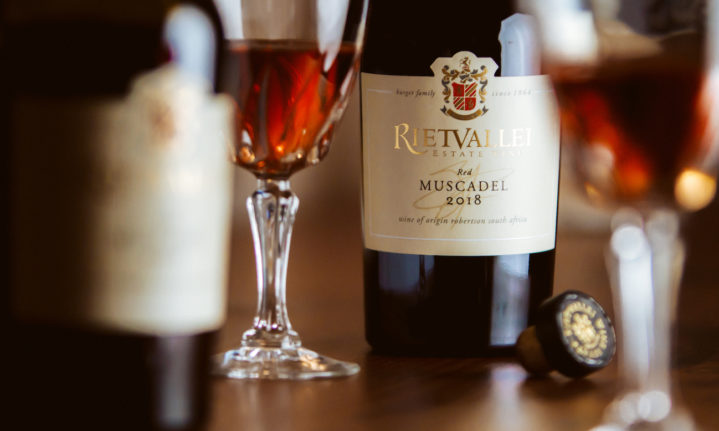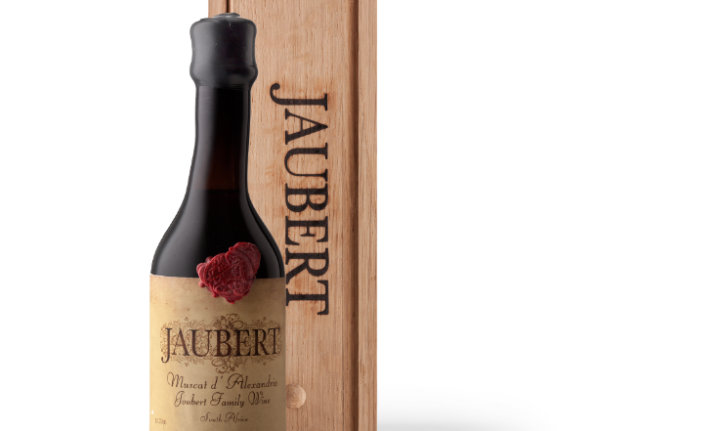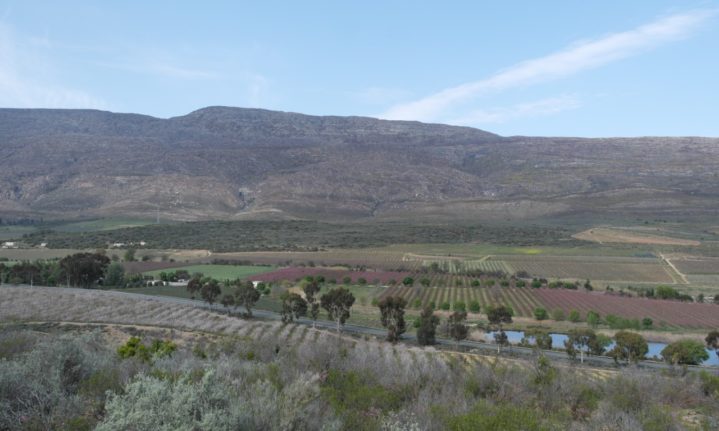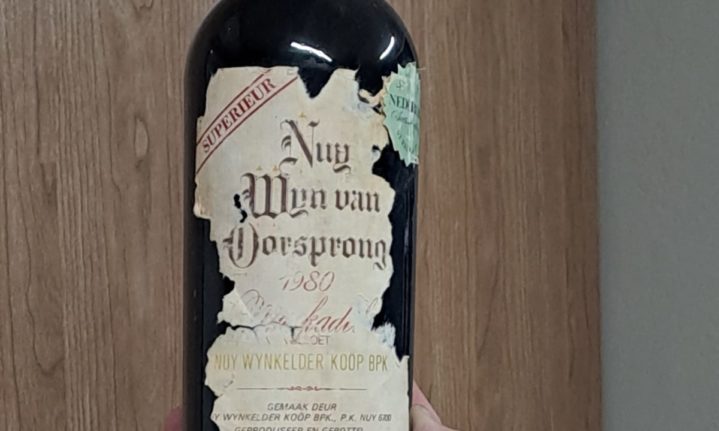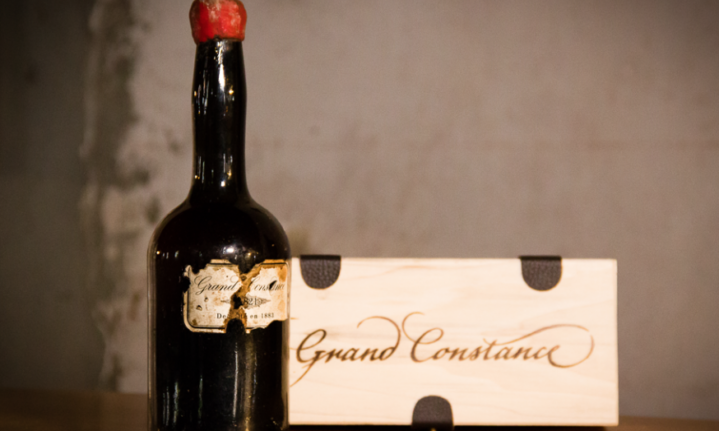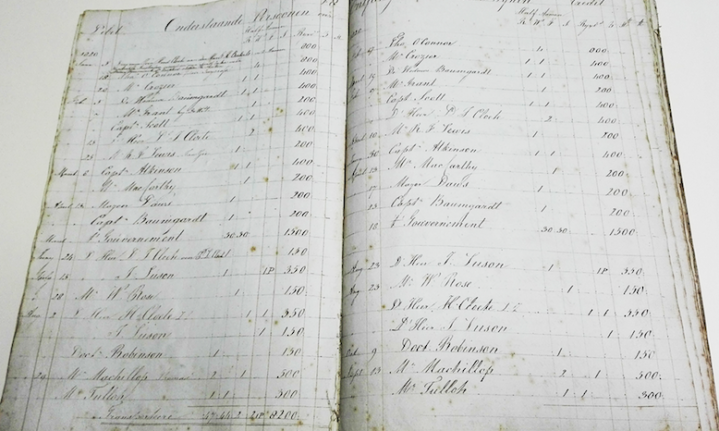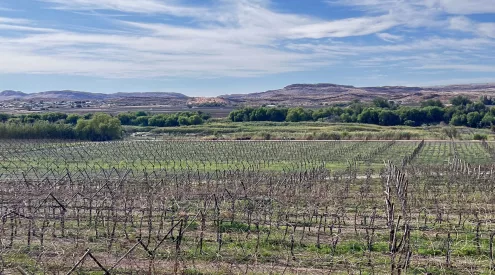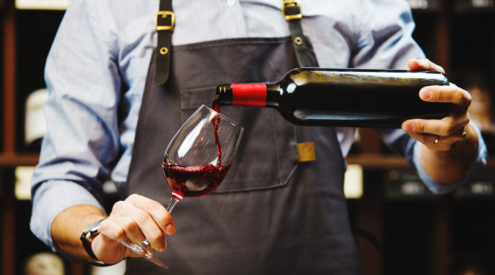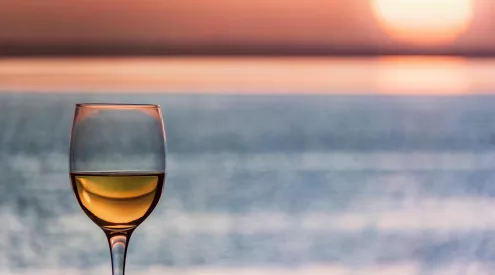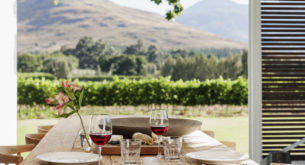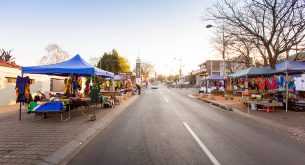Can something sweet cure the ills of a broken heart? Can this same elixir be used in an ancient ceremony to symbolise the divine? Muscadel: a fortified South African wine that has been enmeshed in South African culture for decades – yet it often does not get the recognition it deserves.
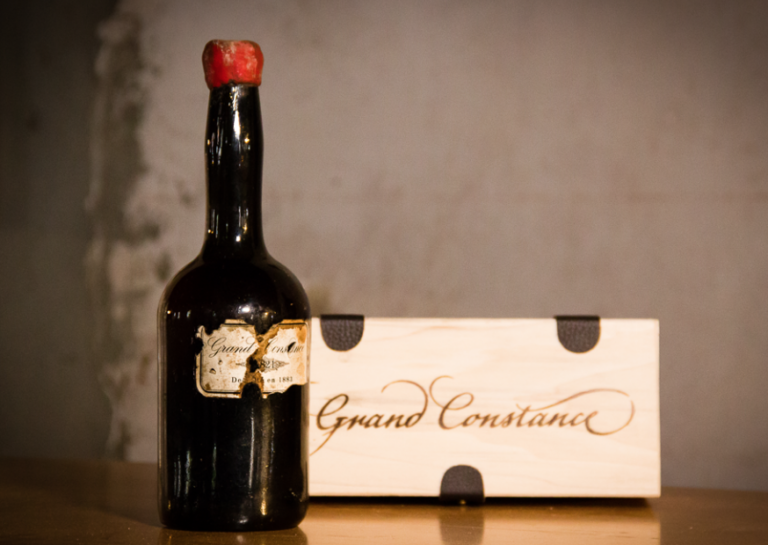
The 1821 Grand Constance made with humble Hanepoot grapes. Picture: Groot Constantia
Muscadel is made from Muscat de Alexandre or Frontignan grapes, said to be one of the oldest vines planted in South Africa. In Jane Austen’s novel dealing with matters of courtship and broken hearts, Sense and Sensibility, the brokenhearted character, Marianne, is told to drink ‘the finest old Constantia wine’ for its ‘healing powers on a disappointed heart’.
Constantia put South Africa on the global wine map, and it wasn’t a hearty red or a crisp Sauvignon Blanc – but a beloved Hanepoot.
In the 18th and 19th centuries, Constantia was renowned for its desert wines which were savoured by society’s upper echelons from around the globe. It is said that figures like Otto von Bismarck and King Louis of France indulged in the sweet liquid, and even an English Prime Minister ensured that regular consignments were delivered to Buckingham Palace after sampling one in Downing Street.
Arguably the most famous tale about muscadel has to do with it being the wine of choice for Napoleon Bonaparte when he was imprisoned on St Helena. It is documented that a monthly order was delivered for the exclusive use of Napoleon from 1815 until his death in 1821.
Also Read: 11 things to do in Simon’s Town in 2023
An unopened bottle of this Grand Constance 1821, originally destined for Napelon, sold for R967 300 in 2021. But another wine went largely unnoticed at the auction, even though it fetched a whopping R91 040: the Juabert Family Muscat d’Alexandrie 1800 – but more about that later.

Tasting the divine
Some people’s first encounter with wine likely came in the form of communion wine at a religious institution. There is an origin story to where South Africa’s nagmaalwyn originated, dating back to a certain Herman Lambertys Bosman and the Strooidakkerk in Paarl.
Herman was a leading church elder, and in the 18th century, he acquired two vats from the Dutch ship Overrys to fill with wine for communion services. These vats were then topped with more wine every year. It somewhat gives the impression of a starter culture for sourdough kombucha – but with a much more pleasant aroma.
Whether or not the NG Kerk (Dutch Reformed Church) still practices this tradition, I don’t know. but I like to think that somewhere out there is a pastor diligently topping up a little barrel behind the chapel, bringing the congregation back to church every Sunday.
‘It’s alive’
Jaubert Family Muscat d’Alexandrie 1800 is known as South Africa’s ‘oldest living wine’. The Joubert family has cared for a 115L barrel of Muscat for more than 200 years, which is topped up around every five years with only the best muscat.
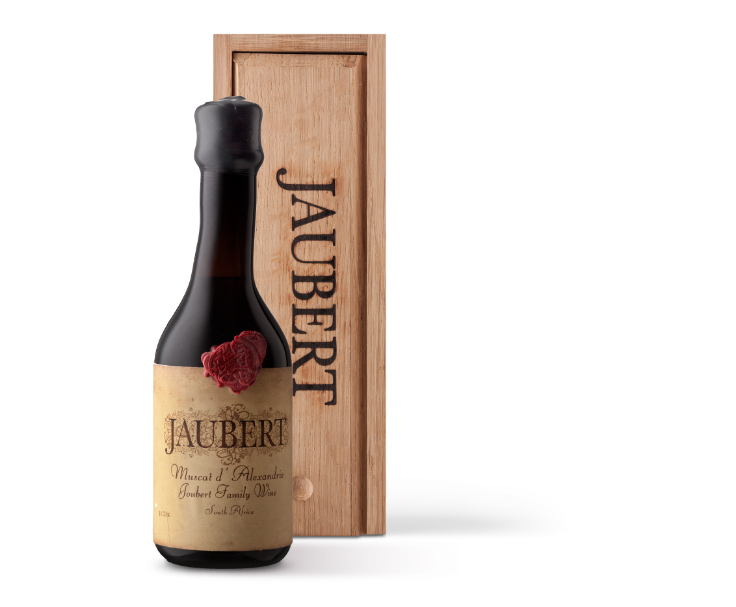
Jaubert Family Muscat d’Alexandrie 1800 is known as South Africa’s ‘oldest living wine’. The Wine Advocate’s Neil Parker described it as: ‘The nose is simply stellar: candied orange peel, toffee, apricot and almond soar from the glass and fixes you to the spot. The palate is perfectly balanced and fresher than some South African wines two centuries younger!’
This wine went rather unnoticed by the wider public at Strauss & Co’s auction, where the Grand Constancestole the show, where a 275ml bottle fetched R91 040. Just 12 bottles were released from a 100L barrel, which is topped up every few years.
Rare wine like this I didn’t get to taste but this practice of topping up the same wine vat is still going strong, but very few have the pedigree of an 1800 vintage. This family heirloom has been passed down for generations, with the house they grew up in built around it.
There are concerns that if they move the barrel, it might simply collapse and the precious cargo inside will be no more. I’ve heard how these types of muscadels no longer have that sharp berry sweetness often associated with muscadels, but rather a rounded tawny-esque taste that rivals wines from around the world.

The Joubert Tradouw farm outside Barrydale is home to South Africa’s highest-awarded wine.
This topping up of a wine vat is known as the Solera (taken from the Spanish) system, where a bit of wine is drawn from a barrel each year and replaced with a new wine, often practiced in the Jerez region of Spain to make sherry. The practice may be associated with sherry-producing regions, but this barrel outside of Barrydale in the Klein Karoo might just be the oldest living wine in the world.
In 2011, this muscadel was the highest-scoring wine in the world for the prestigious Wine Advocate publication, scoring 99 points out of 100, the highest score achieved by a South African wine.
I wasn’t privileged enough to taste it – but this tradition might be catching on again. To find out, I ventured into the heartland of muscadel country – The Breede Valley.
Following the vine
Muscadel is still going strong in the greater Breede Valley and Rietvallei is home to the oldest Muscadel vineyard – Muscat de Frontignen – and possibly the world, planted in 1908.
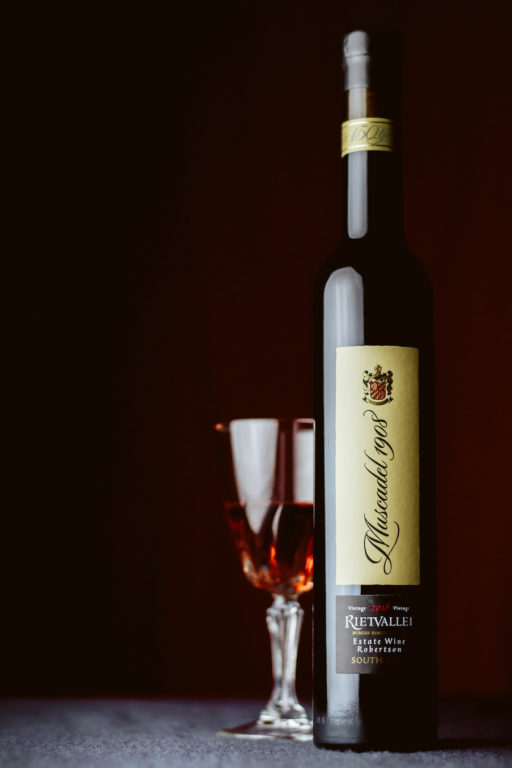
The Rietvallei 1908 Muscadel is made from bush vines planted in 1908. These vines have a very low yield, resulting in a great fruit concentration.
These vines are used in other 1908 Reserve Muscadel but unbeknown to many who visit their tasting room, is an s small barrel that unassumingly sits in the corner.
‘This barrel was filled in 1982,’ sixth-generation winemaker, Kobus Burger tells me. The barrel was initially filled by his father for his mother to have a dessert wine now and then. He forgot about it until Kobus stumbled upon it atop a fermentation tank a few years later.
They tasted the wine – it was still good, and they’ve been topping it up every year since. What I heard when trying to learn more about this wine is that it is all too often opened while it is too young.
This could explain the aversion many (pseudo) wine aficionados have towards fortified wine. It may be grape juice fortified with spirits, but there is a “marriage”.
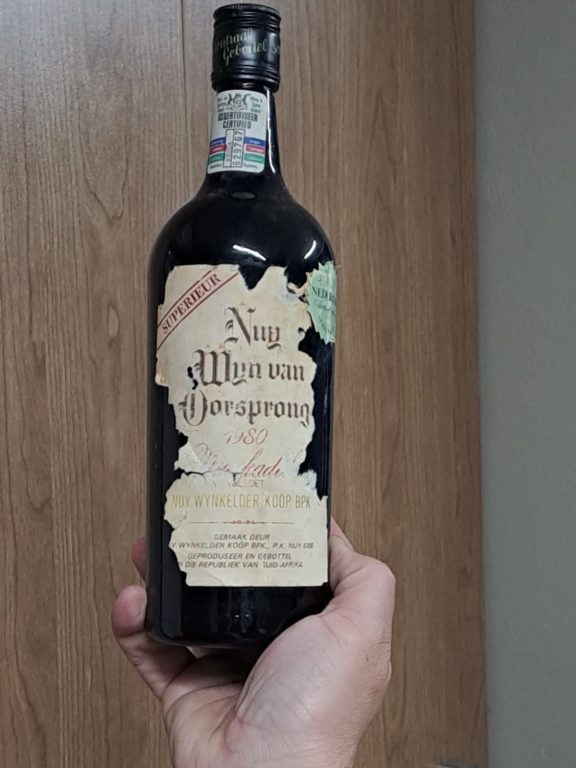
Nuy Winery just outside Worcester is renowned for its Muscadel with old vintages sought after. Here, their marketing manager, AC, holds up a 1980 vintage which he plans to open in a few years.
Chris said that when you taste muscadel directly after fermentation, you mostly pick up spirits and it takes at least a year for the flavours to fuse together.
And like every marriage, it only grows more complex with age. With a young muscadel, you pick up those berry notes and a raisiny sweetness that may be overbearing for some.
But when sampling the 1982 barrel, there’s already a stark difference in the glass. The colour is almost a tawny gold with flavours of marmalade, brûlée and toffee. I don’t like to go on too much about the tasting notes – everyone’s tastebuds are different – but this was good enough to try and fill the churches once more, were the dominee (preacher) kind enough to share.
Follow us on social media for more travel news, inspiration, and guides. You can also tag us to be featured.
TikTok | Instagram | Facebook | Twitter
ALSO READ: The Klein Karoo Wine Route: Everything you need to know

